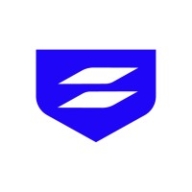

Fortinet FortiGate and Sophos XGS compete in the cybersecurity market, offering comprehensive security solutions. Fortinet FortiGate has a slight edge with its advanced threat protection and scalability, but Sophos XGS appeals for ease of management and innovative security technologies.
Features: Fortinet FortiGate includes advanced threat protection, high-speed performance, and integrated SD-WAN capabilities. It provides extensive threat intelligence resources, enhancing proactive security. Sophos XGS focuses on synchronized security, using AI-based threat analysis and endpoint orchestration, which is essential in environments requiring device coordination.
Room for Improvement: Fortinet FortiGate could improve on initial configuration simplicity and user interface intuitiveness. Deployment could be more streamlined, and centralized management could be enhanced. Sophos XGS may need improvements in its threat intelligence capabilities and scalability for larger environments, alongside a more robust integration with third-party platforms.
Ease of Deployment and Customer Service: Sophos XGS excels in streamlined deployment, allowing quick integration into existing infrastructures, supported by responsive customer service. Fortinet FortiGate offers efficient deployment with a strong service framework but may require more initial configuration effort than Sophos XGS, focusing better on more complex IT environments.
Pricing and ROI: Fortinet FortiGate typically presents a higher upfront cost but offers valuable long-term ROI with scalable solutions and comprehensive features. Sophos XGS provides competitive pricing, appealing to those seeking effective solutions with minimal financial burden. Fortinet FortiGate’s vast feature set justifies its higher cost, while Sophos XGS is appreciated for its cost-effective approach, leading to rapid ROI through simplified and integrated features.
Clients are now comfortable and not wasting productive hours on IT support.
The automation part is giving us a cost benefit and speed; we can react faster.
It's a very useful tool to mitigate and protect your enterprise.
The costs have increased with Sophos XGS in the last few years, with license prices going up by 30%, doubling from $2,500 to about $5,000, which is a big challenge for us.
They offer very accurate solutions.
The quick resolution of issues with Fortinet FortiGate is due to the support of the company and the fact that the equipment is easy to work with.
I would rate the technical support for Fortinet FortiGate a ten out of ten.
Any issues are quickly addressed by their support team, which is not common among all OEM manufacturers.
The technical support of Sophos rates at 10.
I would rate the support a perfect 10.
They scale up really well from smaller models like the FortiGate 40 and 50 to bigger sites with the FortiGate 100 for more throughput - up to enterprise datacenters.
The variation comes in terms of the interfaces and throughputs, but from a security perspective, you get the same benefit, irrespective of whether you have an entry-level unit or an enterprise.
We determine sizing based on multiple factors: number of users, available links, traffic types, server count, services in use, and whether services will be published.
I can change what I want easily without interfering with other services or routines.
I would rate its scalability seven out of ten since modules can be added.
For scalability, you purchase it according to the number of users and traffic; scaling means you would have to buy another product if you exhaust resources.
We're experiencing 99.999% availability consistently.
I would rate the stability of Fortinet FortiGate a ten out of ten.
Currently, we are experiencing a general outage of one of the main internet service providers of the Dominican Republic, and we have not been impacted in our operations because with SD-WAN, we have another internet service provider and we are working with the second WAN connection without any disruption.
It is rated at nine out of ten for stability and is very reliable.
Sophos XGS is stable now, and I would rate its stability as a ten out of ten.
When Sophos introduced firmware version twenty, there was a bug in DCC.
Investing in a solution that can accommodate such growth would be more cost-effective than repeatedly purchasing new hardware.
While Fortinet claims to offer a comprehensive network solution, it falls short in addressing computer application issues, particularly server security.
When considering Sophos XG, which we also use, the logging and reporting functionality is notably more efficient.
It would be beneficial if Sophos XGS offered an end-to-end solution with competitive pricing.
The DDNS features are essential for any organization, as it is better not to have a static IP address from an ISP.
After version 18.5, creating a NAT rule has become more complex, requiring the creation of a separate policy and an additional component.
Last year, I renewed the support for three years, which can sometimes be expensive but depends on the security benefits and how it helps us.
It offers cost savings as it is generally cheaper than the competition.
It is about 20% cheaper.
The last instance I purchased was for three years, around $3,700 for SDG 125.
pricing is rated eight out of ten, indicating that it may be relatively expensive.
Sophos XGS is quite expensive, potentially a nine out of ten in terms of cost.
In terms of security, we have not experienced any security flaws or loopholes, and it has proven to be quite stable.
FortiGate has helped reduce the risk of cyberattacks that might disrupt our client's production.
These features help reduce our downtime, manage the ISPs, and deploy SLAs for all the website traffic.
It's able to detect cloud applications like Zoom or Microsoft Teams and allows traffic shaping based on the application.
I find it much easier than others, like FortiGate, which is complicated in its installation, but Sophos XGS is really easy.
The threat detection capabilities are effective, especially against CNC and certain viruses not coming through emails.
| Product | Market Share (%) |
|---|---|
| Fortinet FortiGate | 20.4% |
| Sophos XGS | 2.4% |
| Other | 77.2% |


| Company Size | Count |
|---|---|
| Small Business | 350 |
| Midsize Enterprise | 130 |
| Large Enterprise | 187 |
| Company Size | Count |
|---|---|
| Small Business | 61 |
| Midsize Enterprise | 10 |
| Large Enterprise | 17 |
Fortinet FortiGate excels in providing integrated VPN, firewalling, and Unified Threat Management (UTM) with centralized management and high availability. It supports remote access and comprehensive threat protection, making it a preferred choice for securing networks.
Fortinet FortiGate offers a robust security platform with features such as strong intrusion prevention, application control, and web filtering. Its integration with Active Directory and SD-WAN functionality provides scalable solutions for large networks. Users appreciate its ease of use through centralized management interfaces, ensuring robust security with flexible configurations. However, FortiGate could enhance its graphical interface and technical support responsiveness, address firmware bugs and costly licensing, improve logging, integrate better with third-party tools, and strengthen scalability and memory for log storage. Complexity in configuration and the need for intuitive features are noted challenges, and there's a demand for advanced security, zero-trust capabilities, and AI integration.
What are the key features of Fortinet FortiGate?Fortinet FortiGate is widely implemented across industries like education, finance, and government. Companies use it for firewall protection, VPN, and SD-WAN capabilities, ensuring secure perimeter and data center security. It facilitates remote access management and traffic routing optimization, offering reliable security and connectivity solutions.
Sophos XGS is a comprehensive network security solution designed to protect organizations from advanced threats. It combines next-generation firewall capabilities with advanced threat protection, web filtering, and application control.
XGS has powerful deep learning technology and can detect and block even the most sophisticated malware and ransomware attacks. It also offers granular control over web access, allowing organizations to enforce policies and prevent access to malicious or inappropriate websites. Additionally, XGS provides application control features, enabling organizations to manage and prioritize network traffic based on specific applications or user groups.
With its intuitive management interface and centralized reporting, XGS offers easy deployment and monitoring of network security.
We monitor all Firewalls reviews to prevent fraudulent reviews and keep review quality high. We do not post reviews by company employees or direct competitors. We validate each review for authenticity via cross-reference with LinkedIn, and personal follow-up with the reviewer when necessary.